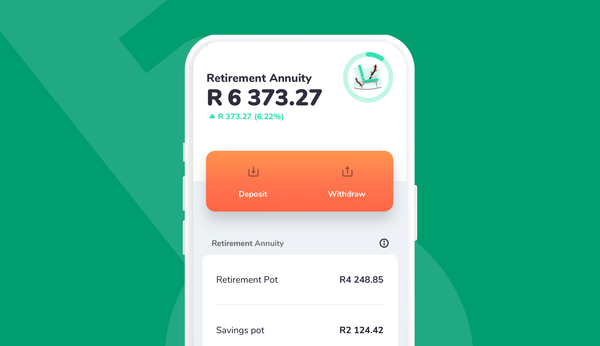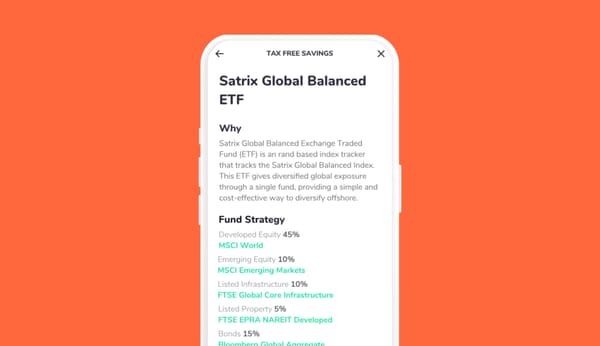In part 1 of Apples and Oranges, we explained why differentiating Granny Smiths and Valencias is a lot easier than figuring out the differences between investment products.
The jargon around investments makes it hard to know exactly what you're going to get and why one product offers lower growth than another.
To help navigate the thousands of investment options out there, we zoomed in on three key things that help us to categorise and understand financial products:
- Firstly, distinguishing risk assets from risk-free assets;
- Secondly, knowing the difference between estimated or "projected" returns, variable returns, and guaranteed or "fixed" returns; and
- Thirdly, understanding the main ways that rates-of-return are quoted.
Make sure to read Part 1 of this article, if you haven't already, for a breakdown of each of these points.
Investment Objectives
Understanding the three key principles outlined above is the first step.
The second is understanding what you want from your investment.
Comparing a risk product (like an equity unit trust) with a risk-free product (like a fixed deposit account) is tricky because they have such different characteristics.
It's a bit like comparing an ox wagon and a chariot – they both have wheels, they're both pulled by animals, but they are as different as chalk and cheese. One is quick but can only carry one or two people, the other is slow but can transport a ton of cargo.
There's no point asking "Which is better?" unless you have other information – What is being transported? Over what distance? Is there a time constraint? etc.
It's the same with financial products. Before making comparisons and choosing "the best" investment you have to be clear about a few questions. The key ones are:
- What's the goal or purpose of the investment?
- What is the timeframe of the investment?
- Is the exit from the investment flexible?
These questions are important because the risks inherent in risk assets change depending on two vital factors – the time horizon and the exit strategy.
To illustrate, let's look at the actual returns of the Satrix 40 ETF over the last 20 years. The best 1-year return since the fund launched in late 2000 is a gain of 65% – R1,000 became R1,650 in 12 months (a savings account grew to around R1,050).
On the flip side, the worst year was -38% – R1,000 reduced to R620 over 12 months.
Remember that the share market is unpredictable. If you invest in shares you don't know whether you will be up or down in 12 months. This time next year R1,000 could be worth R1,200… or R1,500… or R900… or R800. That's why it's in the risky category.
It’s also why investing in the share market for short periods is not a good idea (although, interestingly, even over random 1-year periods since 2000 you had a 68% chance of getting a 5% return or better).
But don't stop here thinking "the share market and equity funds are not for me, they're too risky" – there's more to know and this is where it starts to get really interesting.
If we look at 3-year rolling returns for the Satrix 40 ETF since late 2000, we find that the best return was a massive 44% per year, and the worst case was -2% per year.
In the best case, R1,000 turned into almost R3,000; in the worst case it turned into R940.
In other words, if you'd had a 3-year time horizon instead of 1-year, the risk/return balance was much more favourable. Of course, no one wants to see their R1,000 lose sixty bucks, but if that's the worst case and the best case is tripling your investment, the risk seems worth it.
The story gets better. Over five years the best case was 35% per year and the worst case was -0.7% per year – R1,000 turned into R4,484 in the best case… and reduced to only slightly to R965.00 in the worst case scenario.
It's like risking R35 against the potential of making a gain of R3,500.
And here's the most important part of the story – for periods of 6 years and longer there were no negative returns. Over random 6-year periods you had a 96.8% chance of making an annualised return of 5% or better.
Actually, there's an even more important element – exit flexibility.
In each example above, it's assumed the investor sold after a defined term – after exactly 3 years or exactly 5 years, for example. But in each case, the investor would not have made a loss had he or she been able to delay selling for a few months.
Because the stock market often rebounds quite quickly, being able to delay cashing in an investment usually turns a loss into a profit.
Over nearly 200 rolling 5-year periods there were actually only 5 exit points with negative outcomes. In each case, had the investor been able to wait 4 to 8 months the return would have been positive and the investor would have been no worse off than an interest-bearing investment.
The Bottom Line
Hopefully, it's clear from the above that for shorter-term investment goals (less than 3 years), risk-free investments are the safest option.
Risk assets should be considered where the time horizon is more than 3 years and the cash from the investment will not be needed at a very specific future date.
And in all cases, make sure you're comparing annualised percentages after costs. That's the bottom line.










